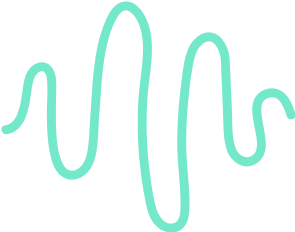Project Meeting Agenda Template
.svg)
Management
.svg)
1. Welcome and Introductions
[Kick off the meeting with a brief welcome and introduction of all attendees. Ensure that everyone is clear on their roles and the purpose of the meeting]
.svg)
2. Review of Previous Action Items
[Review the action items from the previous meeting. Discuss what has been completed, what remains outstanding, and any blockers preventing progress.
.svg)
3. Project Status Update
[Each team or department provides a brief update on their progress. Focus on milestones achieved, upcoming deadlines, and any deviations from the project plan]
.svg)
4. Task Assignments and Next Steps
[Assign new tasks, deadlines, and responsibilities. Clarify the next steps and ensure that each team member knows what is expected of them before the next meeting]
.svg)
5. Risk and Issue Management
[Discuss any new risks or issues that have arisen since the last meeting. Collaboratively come up with mitigation strategies to address these risks and ensure the project stays on track]
.svg)
6. Budget and Resource Review
[Review the project budget and current resource allocation. Ensure that the project is within budget and that the necessary resources are available for upcoming tasks]
.svg)
7. Client or Stakeholder Feedback
[If applicable, discuss any feedback from clients or stakeholders. Address their concerns or suggestions, and outline how the project team plans to respond]
.svg)
8. Open Discussion
[Provide time for open discussion where attendees can raise any additional topics, ideas, or concerns that were not covered in the structured agenda]
.svg)
9. Closing Remarks and Meeting Summary
[Summarize the key points discussed in the meeting, confirm next steps, and close with any final remarks or reminders. Set the time and date for the next meeting]
.svg)
.svg)
.svg)
.svg)
.svg)
.svg)
.svg)
.svg)
.svg)
.svg)
.svg)
.svg)
.svg)
Why is a project meeting agenda so useful ?
A structured meeting agenda is essential for effective project management and team collaboration. Here are several reasons why this type of meeting agenda is so useful:
- Clarity and Focus: By outlining the key topics in advance, a structured agenda ensures that all participants are clear on what needs to be discussed. This keeps the meeting focused on critical project objectives, preventing unnecessary digressions.
- Time Management: A predefined agenda helps the team stay on schedule, allocating time appropriately for each section. This reduces the chances of running overtime or missing important topics due to poor time management.
- Accountability: Reviewing previous action items and assigning new tasks during the meeting promotes accountability among team members. It sets clear expectations, making it easier to track progress and follow through on commitments.
- Efficient Decision-Making: Structured agendas often include time for discussing risks, issues, and client feedback, ensuring that decisions are made collaboratively and with all relevant information on the table. This can lead to faster and more informed decision-making.
- Proactive Risk Management: Dedicated sections for risk and issue management allow the team to identify and address problems before they escalate. This proactive approach minimizes the impact of risks on the project’s timeline, budget, and overall success.

Forget note-taking and
try Noota now
FAQ
In the first case, you can directly activate recording as soon as you join a videoconference.
In the second case, you can add a bot to your videoconference, which will record everything.
Noota also enables you to translate your files into over 30 languages.

.svg)
.svg)
